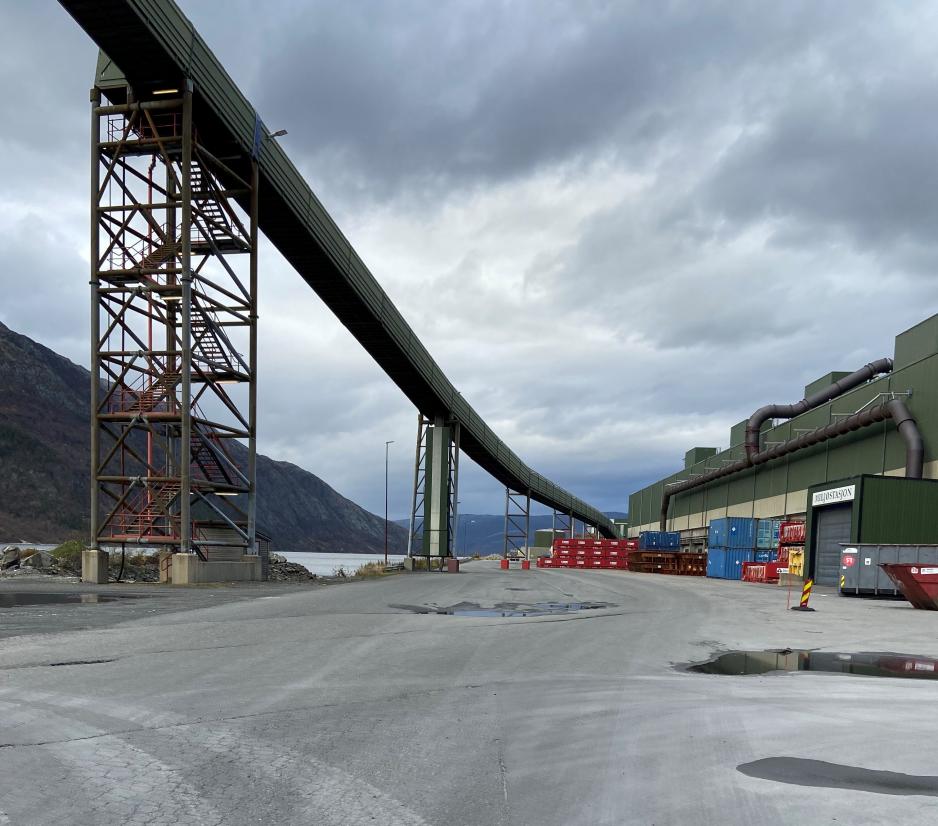A Little Piece of USA in Mosjøen Aluminum Town in Norway
With benefits stemming from Norwegian power production and low electricity prices, American-owned Alcoa in Mosjøen, Norway has supplied Europe with aluminum for almost 60 years. As Norway’s second-largest consumer of electricity, the company is definitely part of what may become a battle for electric power.
There is a long distance from Pennsylvania, USA to Mosjøen, Norway.
The American state is home to the headquarters of one of the world’s largest aluminum corporations; the Aluminum Company of America (Alcoa). About 60 years ago, Alcoa entered Mosjøen, a small town deep inside a fjord just south of the Arctic Circle.
The aluminum plant has since grown to become a cornerstone enterprise in the industrial town.
The plant employs some 550 people. In a town of almost 11,000 people, that is quite a significant share.
“Besides the aluminum production, services such as mechanics and other support functions are on contracts. If we include direct sub-suppliers working at the plant, we are some 750 people. In Mosjøen, many people have jobs that are a consequence of the aluminum plant”, says External Affairs Manager Trym Solhaug Vassvik at Alcoa Norway.
High North News visits Alcoa’s plant in October and at this time of the year, the plant is located at the foot of tall, autumn-colored mountains.
“In my opinion, this is one of Norway’s nicest work places”, Vassvik says while nodding towards the river quietly flowing beside the plant.
On the premises, new staff pass one by on bicycles all the time; a hint about how big the halls and areas covered are.
The smell here is new to the journalist, and resembles freshly laid asphalt. Perhaps that is the smell of melted aluminum?
The Smelter
Inside the electrolysis plant, the journalist’s camera goes black for a few seconds. Vassvik explains that the strong magnetic fields in here forces visitors to leave everything from credit cards to watches outside.
This is where the aluminum production takes place.
The metal aluminum is produced from alumina (aluminum oxide) through electrolysis. The alumina is, in turn, extracted from a mineral called bauxite. Norway imports the alumina from other countries.
The aluminum electrolysis is an electro-chemical reaction that is caused by sending direct current through an electrolyte of melted salt. The current is conducted via a carbon anode to the cathode through the electrolyte. The aluminum oxide is reduced to aluminum in the electrolyte while the carbon anode is oxidized to CO2.
It is the high current that makes the magnetic field noticeable, Vassvik adds.
The process of producing aluminum from alumina through electrolysis requires much energy and takes place at high temperatures. Even though the outdoor temperature is low, the long halls heat up. At the plant, heat is produced corresponding to the need for 100,000 households annually.
When we use the amounts of electricity that we do, we are talking about high costs

Petroleum coke is transported to the pulp mill on an assembly line from ships in Mosjøen harbor. The mass is put into molds at Alcoa's own anode factory and baked for 14 days before the anode is sent for electrolysis.
Norway’s second-largest consumer of electricity
On the two Alcoa-run plants in Norway, in Mosjøen and in Lista (near Stavanger), the total consumption of electricity reaches almost 5 TWh. The plant in Mosjøen accounts for about 3 TWh.
“Alcoa Norway accounts for about three percent of the overall Norwegian electricity consumption. That is a lot. Second only to Hydro, we are Norway’s largest consumer of electricity”, says Ole Løfsnæs, Nordic Energy Director at Alcoa.
Amongst the many factors contributing to the company’s production, the price on electricity is thus the single most important factor, Løfsnæs explains.
“It is decisive. Using that much electricity, we are talking about high costs”, he says and adds:
“What separates the price on electricity from other costs, such as e.g. the price on raw materials, is the fact that electricity prices vary from one country to the other. Global prices for raw materials such as e.g. alumina is something all producers have to relate to. In Norway, we have traditionally had lower electricity prices than many other countries, even compared to countries operating in the aluminum production business. The fact that we have renewable power from hydropower and wind power, which also are competitive, has meant that Norway is a good place in which to be an aluminum producer."
Wind power initiative
Even though production of aluminum in Norway has traditionally been operated on hydropower, Alcoa’s current energy consumption consists of a mix of wind and hydropower. The company has in recent years signed agreements with three wind power suppliers for its plant in Mosjøen.
“There is quite a lot of wind power in the power grid in the north now. If one looks at relative shares, the relative share of wind power was two percent out of the overall power production ten years ago. Today, that number is ten percent”, Løfsnæs says.
And despite electricity prices in southern Norway having soared in 2021, the prices in the north are still fairly good.
“Mosjøen has several advantages, on of which being that it is located in Northern Norway, where prices are lower than in the rest of the country. Here in Nordland county, there is a lot of energy production and limited transfer capacity to other regions.”
“We need more power”
With increased electrification and several major industry projects in Norway, such as the Freyr battery factory just an hour further north, there are many indications that consumption of electricity will increase over time. That means prices are likely to increase, too.
“There is particularly one thing affecting how high or low future electricity prices will be in this country in the future; namely how much power production increases compared to consumption.”
“And we are expecting a development in which consumption will increase quite significantly. At the same time, it is hard to develop anything at all. There is an abrupt halt to wind power development and limitations when it comes to hydropower. If we are to keep our competitive advantages, we will at some time have to develop more renewable power. We welcome new industry, however, that may also mean that we develop a situation in which some of us will be unable to manage the ensuing electricity prices if we do not develop more power plants”, the Energy Director says.
In the electrolysis hall, where aluminum has been split from alumina in the anode, the medal is pumped up and transported on to the cast house.
The Cast House
Back in the electricity-all-consuming part of the plant, the electrolysis facility, the aluminum is eventually separated in liquid form. A vessel then pumps up the material and transports it to the cast house.
At the cast house, aluminum is poured into large ovens in which alloys are made, meaning that other metals are added in accordance with customer specifications.
Alcoa Mosjøen ships its aluminum products from the port of Mosjøen and southwards to Rotterdam in the Netherlands. The markets are in Europe.
The fact that we are a major corporation makes us more robust when facing challenges.
American backing
When Alcoa established business in Norway back in 1962, the company originally cooperated with Elkem. Together, they ran Mosjøen Aluminum Plant. In 2009, however, Alcoa acquired Elkem’s share of the plant and it has been the sole owner since.
External Affairs Manager Trym Solhaug Vassvik says the American parent company provides invaluable backing in a tough industry.
“We have to contribute when days are good, and the parent company is there and helps us out when the going is tough. Producing aluminum is not a static thing, power prices and aluminum prices may change, and that affects our profitability to a varying extent. It is in particular good to be part of a larger organization when facing global competition”, Vassvik says.
“The fact that we are a major corporation makes us more robust when facing challenges and we have a larger knowledge pool. We are many who pull together. Of course that helps”, he says in closing.
This article was originally published in Norwegian and has been translated by HNN's Elisabeth Bergquist.







